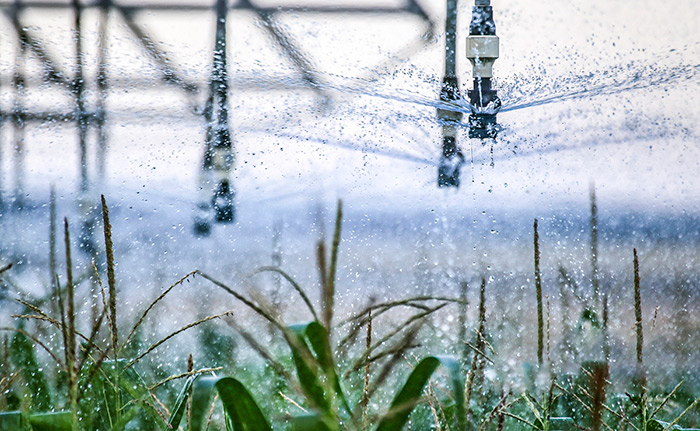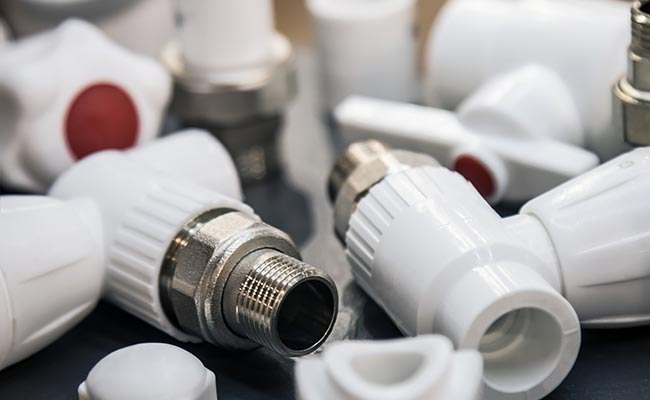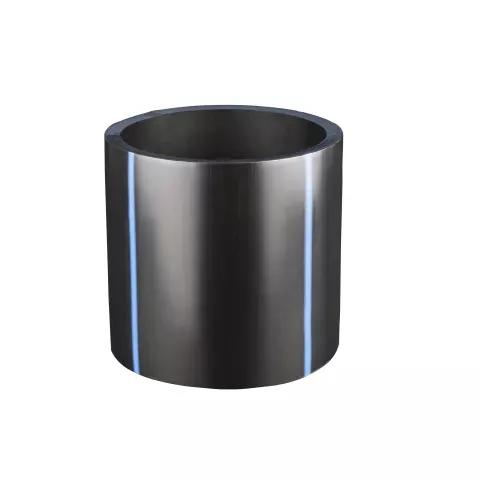
As pessoas confiamConexões de tubos de PEADPor sua resistência e design à prova de vazamentos. Essas conexões duram mais de 50 anos, mesmo em condições adversas. Veja os números:
| Recurso | Valor ou Descrição |
|---|---|
| Vida útil | Mais de 50 anos |
| Junta à prova de vazamentos | As juntas de fusão evitam vazamentos |
| Nível de estresse (PE100) | 10 MPa a 20°C por 50 anos |
| Resistência a rachaduras | Alta resistência a fissuras lentas e rápidas |
Eles mantêm a água segura e os sistemas funcionando sem problemas.
Principais conclusões
- Conexões de tubos de HDPEoferecem durabilidade excepcional com forte resistência à corrosão, produtos químicos e temperaturas extremas, tornando-os ideais para ambientes difíceis.
- A soldagem por fusão avançada cria juntas perfeitas e à prova de vazamentos que garantem conexões confiáveis e duradouras, mesmo sob pressão e movimentação do solo.
- Esses acessórios proporcionam longa vida útil com manutenção mínima, economizando dinheiro e reduzindo o impacto ambiental por meio da reciclabilidade e menores custos de instalação.
Durabilidade excepcional de conexões de tubos de PEAD
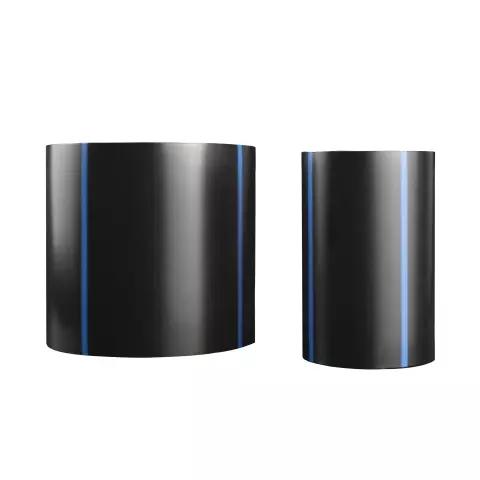
Resistência à corrosão e produtos químicos
Conexões de tubos de PEADDestacam-se por não enferrujarem nem quebrarem quando expostos a produtos químicos agressivos. Muitas indústrias, como estações de tratamento de água e oleodutos, escolhem essas conexões por sua alta resistência. Por exemplo, a Estação de Recuperação de Água de Los Angeles utiliza conexões de PEAD para tratar águas residuais difíceis sem vazamentos ou danos. Em Sydney, as tubulações de água do mar dependem dessas conexões para evitar a corrosão causada pelo sal. Mesmo no setor de energia de Houston, as conexões de PEAD continuam funcionando bem, apesar da exposição a produtos químicos.
Pesquisadores descobriram diversas maneiras de tornar essas conexões ainda mais resistentes. Eles adicionam agentes especiais e antioxidantes, utilizam tratamentos de superfície e, às vezes, misturam nanomateriais. Essas etapas ajudam as conexões a durar mais e a permanecerem seguras em ambientes adversos. Estudos mostram que tubos de PEAD duram até 30% mais na mineração e reduzem os custos de manutenção em 40% em áreas marinhas com alta salinidade. Sua capacidade de resistir a ácidos, bases e sais os torna a melhor escolha para diversos trabalhos.
Alta resistência ao impacto
As conexões de tubos de PEAD suportam impactos e continuam funcionando. Elas permanecem resistentes mesmo em temperaturas congelantes, até -60 °C, o que significa que raramente racham no frio. Testes padrão, como os testes de impacto Izod e Charpy, mostram que essas conexões absorvem muita energia antes de quebrar. Essa alta ductilidade permite que elas se dobrem e flexionem em vez de quebrar sob pressão.
Engenheiros também realizam testes de resistência hidrostática para verificar a pressão que as conexões suportam. Esses testes comprovam que as conexões de PEAD podem suportar tensões por longos períodos. Controles de qualidade e certificações garantem que todas as conexões atendam a rigorosos padrões de segurança. Devido a essas características, as conexões de PEAD funcionam bem em locais onde os tubos podem ser atingidos ou sacudidos, como no subsolo ou em fábricas movimentadas.
Desempenho à prova de vazamentos de conexões de tubos de PEAD
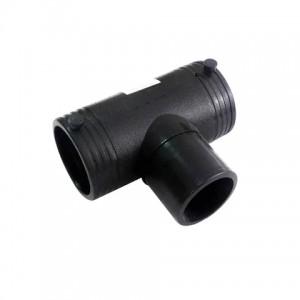
Métodos avançados de junção
As conexões de tubos de PEAD utilizam alguns dos métodos de união mais confiáveis do mundo da tubulação. A fusão de topo e a soldagem por eletrofusão se destacam como as principais opções. Esses métodos criam conexões fortes e sem vazamentos, derretendo as extremidades dos tubos e pressionando-as. O processo exige limpeza cuidadosa, alinhamento perfeito e a temperatura correta — geralmente entre 200 °C e 232 °C para a fusão de topo. Os trabalhadores também controlam a pressão e o tempo de resfriamento para garantir que a união permaneça firme.
Veja como essas etapas ajudam a evitar vazamentos:
- Fusão de bundae a soldagem por eletrofusão formam uma única peça sólida, sem pontos fracos.
- Extremidades de tubos limpas e alinhamento constante evitam folgas ou soldas irregulares.
- Aquecimento e resfriamento cuidadosos protegem a articulação contra danos.
- Após a soldagem, os trabalhadores verificam as juntas usando testes de pressão e inspeções visuais para garantir que tudo esteja bem selado.
Normas industriais como a ASTM F2620 orientam cada etapa, garantindo que cada junta atenda a rigorosos padrões de qualidade. Esses métodos avançados conferem às conexões de tubos de PEAD uma grande vantagem em relação aos materiais mais antigos.
Conexões perfeitas
Conexões sem emendas significam menos pontos de início de vazamentos. A soldagem por fusão torna a junta tão resistente quanto o próprio tubo. Essa técnica segue normas como ASTM F2620 e ISO 4427, que exigem limpeza, aquecimento e resfriamento cuidadosos. Os trabalhadores testam as juntas com pressão de água e, às vezes, até usam ultrassom para verificar falhas ocultas.
- Juntas soldadas por fusão suportam alta pressão e produtos químicos agressivos.
- O design suave e sem emendas mantém a água e o gás dentro, mesmo em condições climáticas adversas ou no subsolo.
- Dados de campo mostram que essas juntas duram décadas, mesmo em locais com água salgada ou luz solar forte.
Dica: Conexões perfeitas ajudam os sistemas a funcionar por mais tempo com menos manutenção.
Flexibilidade e adaptabilidade de conexões de tubos de PEAD
Suportando o movimento do solo
As conexões de tubos de PEAD demonstram uma resistência impressionante quando o solo se desloca ou treme. Sua natureza dúctil permite que se dobrem e flexionem em vez de se romperem como tubos rígidos. Durante terremotos ou obras pesadas, essas conexões absorvem o movimento e mantêm a água ou o gás fluindo. Ao contrário do aço ou do PVC, que podem rachar ou quebrar sob tensão, o PEAD se curva com o solo. As juntas soldadas por fusão criam um sistema único e à prova de vazamentos que resiste a vibrações e alterações do solo. Isso torna o PEAD a melhor escolha para cidades em zonas de terremotos ou locais com solo instável.
Observação: as juntas de HDPE soldadas por fusão ajudam a evitar vazamentos mesmo quando o solo se move, mantendo os sistemas seguros e confiáveis.
Aplicações Versáteis
As conexões de tubos de PEAD funcionam em diversos ambientes. Sua ampla variedade de tamanhos e classificações de pressão permite que se adaptem a tudo, desde encanamentos residenciais até grandes instalações industriais. Veja os números:
| Parâmetro | Valor/Intervalo | Exemplo de caso de uso |
|---|---|---|
| Faixa de diâmetro de tubo | 16 mm a mais de 1600 mm | Casas, fábricas, redes de água da cidade |
| Classificações de pressão (SDR) | SDR 11, 17, 21 | Sistemas de baixa a alta pressão |
| Tolerância à temperatura | -40°C a 60°C | Climas quentes/frios, locais industriais |
| Vida útil | Mais de 50 anos | Infraestrutura de longo prazo |
As pessoas usam essas conexões para abastecimento de água, esgoto, gás, mineração e até mesmo como condutores de cabos. Agricultores dependem delas para irrigação, enquanto cidades as utilizam para água potável. Indústrias químicas escolhem o PEAD por sua resistência a fluidos agressivos. Sua flexibilidade facilita a instalação, mesmo em terrenos difíceis ou espaços apertados.
Longevidade e baixa manutenção de conexões de tubos de PEAD
Vida útil estendida
As conexões de tubos de PEAD se destacam por sua impressionante vida útil. Muitas cidades utilizam esses tubos há décadas sem problemas. Por exemplo, Las Vegas instalou tubos de PEAD na década de 1970. Após mais de 40 anos, a cidade não relatou um único vazamento ou quebra. Esse tipo de histórico demonstra a confiabilidade dessas conexões em condições reais. Estudos do Plastic Pipe Institute afirmam que os tubos de PEAD modernos podem durar mais de 100 anos. Mesmo em locais difíceis como minas, esses tubos duram até quatro vezes mais do que os tubos de aço.
Veja como o HDPE se compara a outros materiais:
| Material do tubo | Taxa de falhas (por 100 milhas por ano) |
|---|---|
| Tubos de PEAD | Praticamente zero falhas |
| PVC | 9 |
| Ferro dúctil | 14 |
| Aço | 19 |
As juntas de fusão de PEAD também recebem notas máximas em durabilidade e prevenção de vazamentos. Essas juntas resistem à corrosão e retêm água ou gás no interior, mesmo sob alta pressão.
Requisitos mínimos de manutenção
As pessoas escolhem conexões de tubos de PEAD porque elas exigem pouquíssima manutenção. A superfície interna lisa mantém a água fluindo e evita o acúmulo, o que significa menos limpeza e menos reparos. Aqui estão alguns motivos pelos quais a manutenção permanece baixa:
- Os custos anuais de reparo são de US$ 0,50 a US$ 1,50 por pé.
- Os tubos resistem à corrosão, portanto não há necessidade de revestimentos ou tratamentos especiais.
- As juntas de fusão a quente evitam vazamentos, reduzindo o trabalho de reparo.
- O material forte e flexível resiste ao desgaste, mesmo em condições adversas.
- Os canos raramente precisam ser substituídos, economizando dinheiro ao longo do tempo.
Dica: Escolher o HDPE significa menos dores de cabeça e custos mais baixos nos próximos anos.
Benefícios ambientais e de custo dos acessórios para tubos de PEAD
Reciclabilidade
As pessoas frequentemente buscam maneiras de proteger o planeta enquanto constroem sistemas robustos. As conexões de tubos de PEAD ajudam nesse objetivo. O material é altamente reciclável e contribui para uma economia circular. Muitas empresas coletam tubos e conexões usados, os limpam e os transformam em novos produtos. Esse processo evita que o plástico vá para aterros sanitários e economiza recursos.
Um estudo da ESE World BV constatou que o PEAD pode ser reciclado pelo menos dez vezes sem perder sua resistência ou flexibilidade. Avaliações de ciclo de vida mostram que o uso de PEAD reciclado em novos tubos pode reduzir a pegada de carbono em até 80% em comparação com tubos feitos de plástico novo. Mesmo com cálculos mais cuidadosos, a economia chega a 20-32%. A tabela abaixo mostra o desempenho das misturas de PEAD reciclado:
| Propriedade | Misturas de HDPE reciclado | Requisito mínimo PE100 |
|---|---|---|
| Resistência à Tração no Escoamento | Acima do mínimo | Mínimo necessário |
| Alongamento na ruptura | Acima do mínimo | Mínimo necessário |
| Módulo de Flexão | Acima do mínimo | Mínimo necessário |
| Crescimento Lento de Trincas (SCG) | Atende às especificações | Atende às especificações |
| Propagação rápida de fissuras | Atende às especificações | Atende às especificações |
♻️ A reciclagem de conexões de tubos de PEAD ajuda a economizar energia, reduzir o desperdício e proteger o meio ambiente.
Menores custos de instalação e operação
As conexões de tubos de PEAD também economizam dinheiro ao longo do tempo. Seu design leve facilita a movimentação e a instalação. Os trabalhadores precisam de menos equipamentos pesados, o que reduz os custos de transporte e mão de obra. A soldagem por fusão cria juntas sem vazamentos, o que torna os reparos raros e a perda de água baixa.
Aqui estão algumas maneiras pelas quais esses acessórios ajudam a cortar custos:
- As matérias-primas são acessíveis e fáceis de encontrar.
- As fábricas usam máquinas com eficiência energética para fazer os acessórios.
- Os canos duram mais de 50 anos, então as substituições são raras.
- Resistência à corrosãosignifica que não há revestimentos ou tratamentos extras.
- Tubos flexíveis se adaptam em espaços difíceis, economizando tempo e esforço.
- Menos vazamentos significam menos dinheiro gasto em reparos e perda de água.
Estudos revisados por pares mostram que tubos de PEAD têm uma pegada de carbono menor do que tubos de metal ou concreto. Sua longa vida útil e fácil reciclagem os tornam uma escolha inteligente tanto para o bolso quanto para o mundo.
As pessoas veem confiabilidade incomparável nesses sistemas porque eles combinam resistência, juntas à prova de vazamentos e flexibilidade.
- Eles duram até 100 anos e resistem à corrosão, produtos químicos e movimentação do solo.
- Normas importantes como ASTM e ISO comprovam sua qualidade.
- Projetos do mundo real mostram custos mais baixos e menos reparos ao longo do tempo.
Perguntas frequentes
Quanto tempo duram os acessórios para tubos de PEAD da PNTEK?
MaioriaConexões de tubos de HDPEda PNTEK duram mais de 50 anos. Alguns funcionam bem por até 100 anos em projetos do mundo real.
Os acessórios de tubos de PEAD suportam temperaturas congelantes?
Sim! Os acessórios para tubos de PEAD permanecem fortes e flexíveis em temperaturas congelantes, mesmo em temperaturas de até -60 °C. Raramente racham ou quebram no frio.
Os acessórios de tubos de PEAD são seguros para água potável?
Com certeza. A PNTEK utiliza materiais atóxicos e sem sabor. Essas conexões mantêm a água limpa e segura para todos.
Dica: Os acessórios de tubos de PEAD funcionam bem para muitos usos, desde residências até sistemas de água de grandes cidades.
Horário da publicação: 20/06/2025


